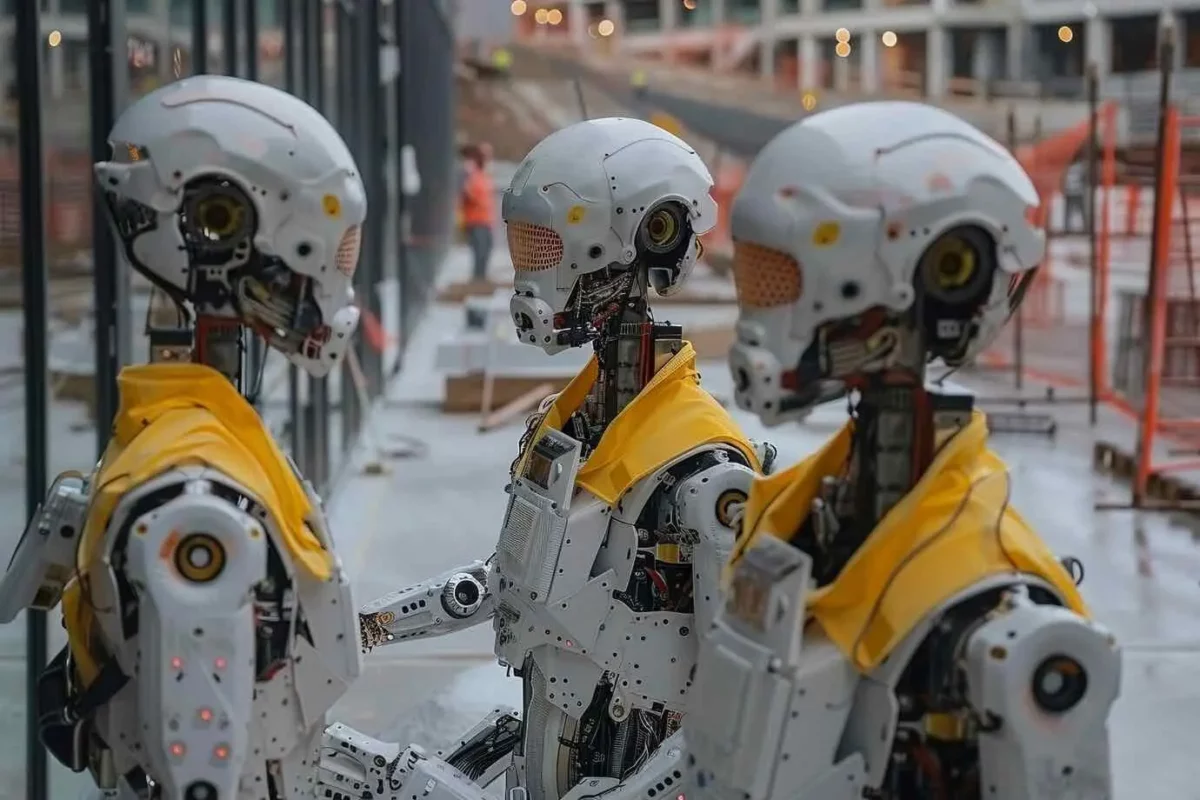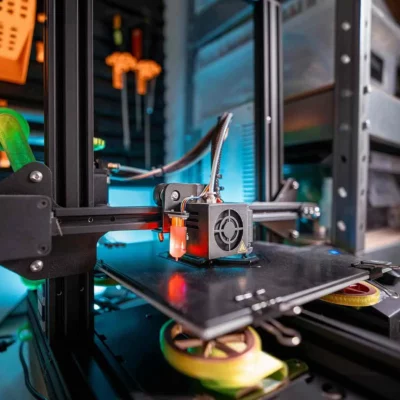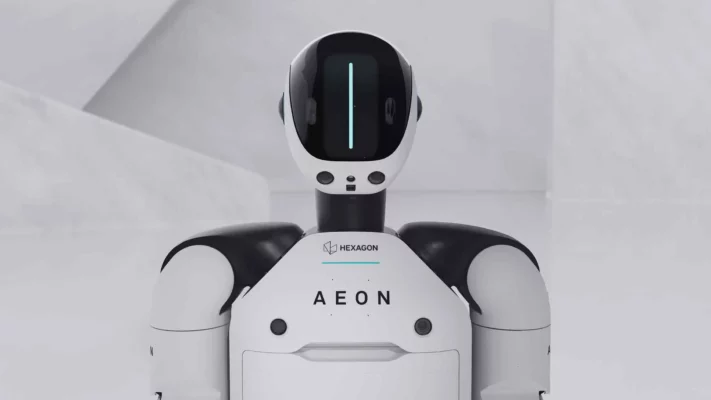If you want to know how China is driving the future of humanoid robots, you’re in the right place. In 2024, China highlighted its rapid progress in this field at major events like the World Robot Conference and the World Artificial Intelligence Conference. You’ll see robots like the agile Qinglong and the versatile UBTech Walker S, which are not just impressive but are transforming industries worldwide.
This article will walk you through these key robots and show how they’re setting new standards. Let’s explore how these advancements can impact your work and the industry.
What are Humanoid Robots?
Designed to look and move like humans. Humanoid Robots have a head, torso, arms, and legs, allowing them to walk and perform tasks similar to yours. These robots use sensors, cameras, and AI to see, understand their environment, and interact with people.
In your industry, you can rely on humanoid robots to handle tasks that require precision, like assembling parts or providing customer service. Developers are also enhancing them for roles in healthcare, education, and household assistance.
To learn more about how humanoid robots work, check out this detailed guide: What is a Humanoid Robot?.
The Rise of Humanoid Robots in China:
China’s Ambitions & Goals:
China is working hard to lead the world in humanoid robotics by 2027. The government has set specific goals to build a secure and reliable supply chain and innovation system by 2025. This focus is crucial to supporting the rapid development of humanoid robots.
Strategy for Global Leadership:
China is investing heavily in key technologies like AI and sensors to strengthen its robotics industry. By focusing on local development and production of these essential components, China is making sure that its robotics sector remains advanced and self-sufficient. This strategy not only drives innovation but also ensures that you and your industry can rely on cutting-edge, homegrown technology without depending on external sources.
Government & Industry Collaboration:
Government support is a major driver of innovation in this field. By fostering partnerships between industry leaders and research institutions, China is making significant progress in both the hardware and software needed for advanced humanoid robots. This collaboration is positioning China as a key player in the global market.
These efforts are setting China up to be a leader in the world of humanoid robotics.
Key Humanoid Robots Unveiled in 2024:
Humanoid Robots (Shanghai) Limited Qinglong:
Qinglong is 185 cm tall, weighs 80 kg, and offers 43 degrees of freedom. It’s developed by Humanoid Robots (Shanghai) Limited, supported by a 1 billion RMB (~$140 million) investment. You’ll find Qinglong ideal for tasks that need precise movements, smooth walking, and reliable obstacle avoidance, even in tough environments.
UBTech Walker S:
Walker S is designed for industrial tasks like sorting, quality checks, and assembling parts. UBTech has teamed up with FAW-Volkswagen to use these robots in unmanned production lines, which helps improve efficiency in car manufacturing.
Unitree Robotics G1:
Unitree Robotics introduces the G1, a compact humanoid robot known for its agility. The G1 is perfect for tasks like inspections, monitoring, and interactive roles. It features advanced AI and high mobility, making it adaptable to different scenarios.
Xiaomi CyberOne:
CyberOne by Xiaomi stands 177 cm tall and weighs 52 kg. It’s designed to recognize 85 sounds and 45 emotions, making it useful for customer service and smart home management. CyberOne is built to enhance your everyday interactions, making them more efficient.
EX-Robots EX Machina:
EX-Robots specializes in humanoid robots for entertainment and customer service. These robots have lifelike movements and advanced AI, offering interactive experiences in various service industries.
Technological Breakthroughs & Specifications:
Advanced Mobility & Precision:
China’s humanoid robots set new standards in mobility and precision. Advanced joint systems allow them to move smoothly and quickly, making it easier for you to tackle complex tasks. These robots handle delicate operations with high-precision control systems, ensuring accuracy and efficiency in your work.
AI-Powered Perception:
These robots use AI, specifically multimodal large language models, to understand and interact with their environment. This technology improves their ability to perceive and make decisions, making them more responsive to the situations you face in real-time.
Hardware & Software Innovations:
The robots feature powerful hardware, including increased computational capabilities and stronger joint torque. Sophisticated sensors enhance their ability to detect and respond to their surroundings accurately. These innovations ensure that your robot operates precisely and safely, whether in industrial or service applications.
These advancements make China’s humanoid robots more capable and reliable for your needs.
Looking to compare humanoid robots? Use Alina, your AI Automation Consultant from Qviro, to easily explore specs and make the best choice for your needs. Get started with Alina now!
GET STARTED WITH ALINA NOW!
Applications of Humanoid Robots in China & Beyond:
Industrial Applications:
Humanoid robots are becoming crucial in your manufacturing processes. You’ll see them directly on your assembly lines, handling tasks like sorting and quality control with precision. For example, UBTech’s Walker S is actively improving efficiency in car factories. Qinglong, another advanced robot, is set to transform industries, especially in hazardous environments where safety is your top concern. These robots are designed to take on the tasks you need to get done, making your operations smoother and more reliable.
Service Sector:
These robots improve healthcare, personal services, and elder care. They handle routine tasks like serving food, cleaning, and assisting with patient care, making your operations more efficient and reliable.
Scientific Exploration & Disaster Response:
Humanoid robots are being developed to work in extreme environments, such as disaster sites and scientific expeditions. Their advanced capabilities allow them to perform tasks that are too dangerous or complex for humans.
To explore more about how these robots are used, check out: What Are Humanoid Robots Used For?.
The Global Impact of China’s Humanoid Robots:
Shaping the Global Market:
China’s rapid progress in humanoid robotics is changing the global landscape. With significant improvements in AI, mobility, and precision, Chinese robots are now setting standards that others are following.
Market Growth You Should Know About:
By 2029, China’s humanoid robot market is expected to reach 75 billion Yuan, making up 32.7% of the global market (China Daily). This shows how quickly China is becoming a dominant force in the robotics industry.
Raising the Bar for Global Competitors:
Chinese humanoid robots are being compared with top global models like Tesla’s Optimus. Innovations from companies like UBTech and Unitree are pushing the boundaries, raising the bar for what humanoid robots can do. These advancements are positioning China not just as a competitor but as a leader in the global robotics arena (TechNode).
This growth means you’ll likely see more Chinese robots influencing global trends and technologies in the near future.
Challenges & Future Prospects:
Challenges You Should Consider:
China’s humanoid robots face several challenges. Technological issues include perfecting AI and ensuring that these robots can safely work in real-world environments. Safety is a major concern, especially when robots operate near people. Additionally, navigating the ever-changing regulatory landscape is essential to ensure compliance and safety (TechNode, China Daily).
What’s Next for China’s Humanoid Robots:
China has a clear plan for advancing humanoid robots by 2025 and 2027. This plan focuses on overcoming current challenges and improving key technologies. It’s all about making sure China stays at the forefront of global robotics.
Why Collaboration Matters:
International collaboration and open-source projects are crucial for driving innovation in humanoid robotics. By working together and sharing knowledge, China and other countries can overcome challenges faster and make significant strides in this field (TechNode, China Daily).
Keeping these challenges and future plans in mind will help you stay ahead in the evolving world of robotics.
Conclusion:
China’s progress in humanoid robots is changing the global robotics landscape. These robots are setting new standards in industries like manufacturing and healthcare. With a clear plan for the future and a focus on collaboration, China is driving innovation. However, challenges such as safety and regulatory hurdles still need your attention. Staying updated on these developments will help you make informed decisions for your projects. As China continues to lead in this field, you can expect more innovations that could directly impact your work and the industry as a whole.






